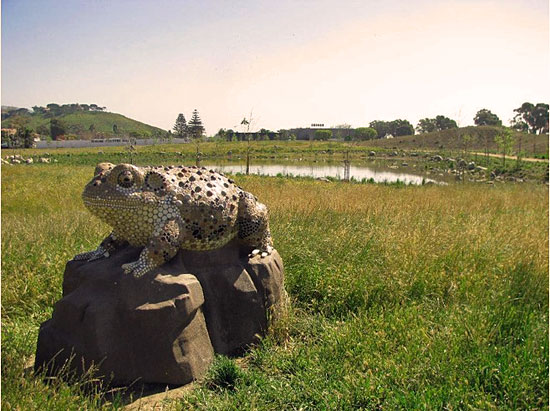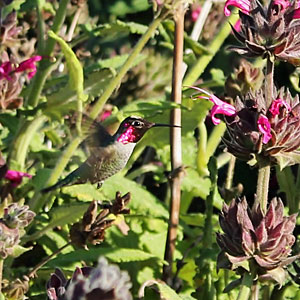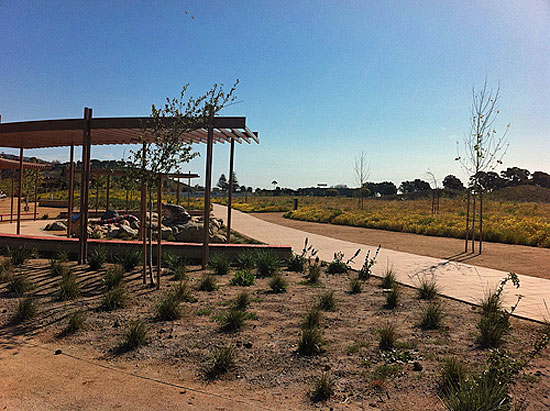Legacy Park in Malibu has wildlife, sculptures, outdoor classrooms and five coastal habitats. But to understand why Los Angeles County’s most innovative new recreational area recently racked up its sixth award in 16 months of existence, you have to look deeper—underground, in fact.
Beneath its meandering walkways and drought-tolerant plantings, the 15-acre central park at Cross Creek Road and Pacific Coast Highway is actually a state-of-the-art system for capturing and cleaning urban runoff that would otherwise course to the ocean, carrying bacteria and trash.
Hidden pipes and filters, working in tandem with the park’s landscaping and Malibu’s existing storm water treatment facility, have trapped and decontaminated tens of millions of gallons of toxic storm water since the park opened in October, 2010.
“It’s pretty unique,” says Malibu City Manager Jim Thorsen, noting that the park was just named the American Society of Civil Engineers’ 2011 Project of the Year for California—the latest in a long string of accolades.
“I don’t know of any other places that not only capture and treat their storm water, but then build a park around it and make it possible for visitors to come in and learn.”
The park grew out of longstanding concerns about bacterial contamination from runoff at Malibu Creek, Malibu Lagoon and Surfrider Beach. When winter storms strike in Southern California, the rains carry chemicals and debris into the Santa Monica Bay from as far away as Thousand Oaks and the Santa Monica Mountains, poisoning the ocean and polluting the beach.
Under pressure to comply with clean water mandates, the city bought a vacant lot and—with $13 million in funding amassed from private and public donors, including $700,000 in Proposition A park funds—began turning the dusty tract into what Thorsen has dubbed “an environmental cleaning machine.”
Runoff from some 337 surrounding acres flows into the park via three major storm drains, then is filtered through a system of screens to catch plastic bags, paper cups and other litter. Then the water runs through more filters to a 2.6 million gallon retention pond at the park’s center, where it sits while contaminants settle at the bottom of a natural sedimentation basin.
Finally, the water is piped to the other side of Civic Center Way, where the city’s storm water treatment facility can clean and disinfect it with ozone. Then the cleaned water is used to irrigate the park, or, on rare occasions, is discharged back into Malibu Creek.
“What has really surprised us is how well it has functioned,” says Thorsen. “We’ve seen water go in, the pond fill, the pumps and the system work to perfection, and the water recycle back into the park. It has worked out exactly as it was supposed to work.”
Kathy Haynes, who chaired the ASCE awards committee, calls the park “an innovative example of incorporating sustainability, showing environmental responsibility and using forward thinking.”
For Thorsen, however, the reward is in the number of calls he’s been getting from developers and communities interested in similar projects, and in the public response over the past year as Legacy Park has come to life.
“It looked like a barren desert, when we first planted it,” he says, “but everyone—the people, the birds, the animals—seems to love it. I’m amazed at how much things have grown in just one year.”
Posted 2/6/12
Want to be part of the solution? Some expert tips on how you can avoid contributing to urban runoff are here.









